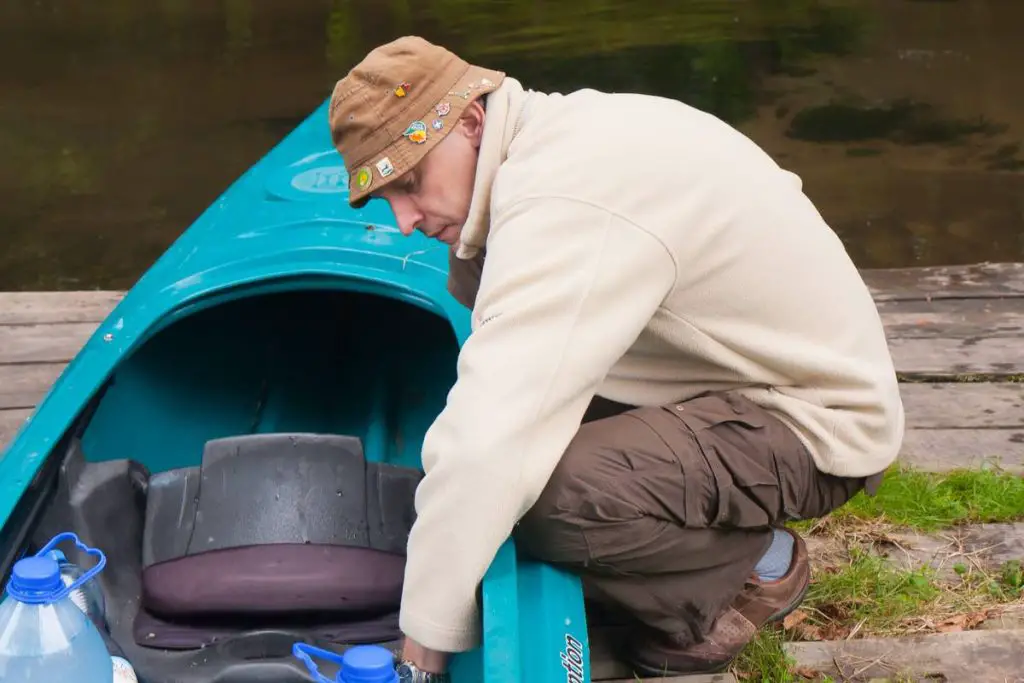Sufficiently maintaining your kayak can be the difference between your kayak lasting two years or two decades. Aside from proper storage and prompt repairs of minor damages, washing or rinsing your kayak is also an important step for its efficient maintenance. Moreover, you should pay attention to how frequently you should rinse it.
You should rinse your kayak after every use. Over time water can cause damage to your kayak, especially when paddling in salt water. Saltwater is highly corrosive, so rinsing your kayak with fresh water after every use will clean off the salt residue and keep your kayak in excellent condition.
In this article, I will discuss the importance of rinsing your kayak. I will also share maintenance tips and talk about a kayak’s lifespan when properly taken care of.

Do You Need To Rinse Your Kayak?
Many states, such as New Hampshire, strongly encourage you to rinse your kayak after every use. It’s also good practice everywhere if you want your investment to last a long time as well as preserve natural bodies of water.
Rinsing your kayak will increase its longevity and decrease the problems that can occur down the line. A good rinse after each outing can benefit your kayak and the earth in two significant ways.
Rinsing a Kayak Will Remove Saltwater
Rinsing your kayak after being in saltwater rinses away the salt and sand it was exposed to during your outing. If your kayak doesn’t get rinsed off, the salt and sand will slowly erode the metal parts on your kayak, reducing its durability.
Over time your kayak would not function in the water as well and would eventually need to be replaced much sooner than it should.
Rinsing a Kayak Will Remove Invasive Aquatic Species
When you go kayaking in any body of freshwater, chances are some microorganisms or small aquatic species native to that area will attach themselves to your kayak.
Making it a habit to rinse your kayak after every use also rinses away invasive aquatic species that could be lingering on your kayak.
These invasive aquatic species, such as zebra mussel, rock snot, and hydrilla, can cause many problems if introduced to other bodies of water during your next kayaking adventure. Rinsing your kayak can help stop the spread of these invasive species to different bodies of water.
How Long Does a Kayak Last?
The lifespan of a kayak depends on how well it is taken care of. There is no blanket answer for how long a kayak will last. However, a kayak that is well taken care of can last for 20 years, whereas a kayak that’s had no maintenance will be lucky to last two years.
Several different factors can play a part in the lifespan of a kayak. These factors include:
- Make and model of the kayak
- How well the kayak is maintained
- Where and how the kayak is stored
- Wear and tear the kayak experiences
- The water type the kayak is used in
Taking the time to maintain your kayak properly is wise so that you will get as much use and enjoyment out of it as possible before it needs to be replaced.
Kayaks range in price from the hundreds to the thousands. Even having to replace a kayak that’s a couple of hundred dollars every two years adds up quickly. You’ll want to get your money’s worth from enjoying your kayak, and you’ll have better chances of doing so if you maintain it properly.
Tips for Maintaining a Kayak
Owning a kayak is the perfect way to pass the time. Not only is kayaking exciting, but it’s also healthy and relaxing too. The purchase of a kayak is worth every penny, and anything worth having is worth taking care of. Here are some tips to keep your kayak in pristine condition, keeping you out on the water for many years to come.
Rinse Your Kayak
As mentioned, it is vital to rinse your kayak after every use. This keeps your kayak from eroding and keeps different bodies of water safe from invasive aquatic species. Rinse your kayak with fresh water thoroughly. Once you are finished rinsing, make sure to dry it completely before storing it away.
It’s also a good idea to rinse all of your equipment. Saltwater eats away at anything it touches, so paddles, wet suits, helmets, and anything else that may have encountered salt water should be rinsed off as well.
Wash Your Kayak
Washing your kayak three or four times throughout the season shouldn’t be glossed over. To give your kayak a good scrub, use these items:
- Mild soap
- Warm water
- Bucket
- Sponge
Washing your kayak is a pretty straightforward process. Follow these five easy steps to ensure your kayak is cleaned correctly.
- Wet your kayak thoroughly.
- Add mild soap to a bucket and fill it with warm water.
- Wet the sponge in the bucket of soapy water and give your kayak a good scrub all over.
- Rinse off all the soapy water.
- Let your kayak air dry completely after washing it.
Remember to wash your kayak with soapy water in designated areas to avoid contaminating the natural bodies of water.
Inspect Your Kayak
Make sure to inspect your kayak after every use. Inspect areas inside and outside your kayak, especially hard-to-clean places that stay damp. Always look over all equipment, including the clothes you have on.
Check for any signs of invasive species latched onto your kayak after being out on the water. What to look for:
- Living organisms
- Aquatic plants
- Leaves
Repair Your Kayak
While inspecting your kayak for any invasive species, also note any damage it may have. Types of damage to look for on your kayak after being on the water include:
- Scratches
- Dents
- Cracks
- Leaks
- Sun damage
If there is damage to your kayak, you will want to repair the damaged areas right away. Also, check for any issues with equipment, and be sure to replace anything damaged before your next outing.
Store Your Kayak Properly
When storing your kayak, make sure it is clean and completely dry. Store it in an area that is safe from the elements. For instance, keep your kayak out of the sun in a dry, temperature-controlled place, such as a garage or a room inside the house large enough to accommodate the equipment.
Here are more tips for storing your kayak:
- Keep your kayak off the ground. Hang it up against a wall, making sure it is supported by the cockpit and on well-padded wall mounts. Its weight should be distributed evenly when stored on a wall mount. If you must store your kayak on the ground, position it properly so that it’s standing on its side. It’s also best to cover the cockpit.
- Store your kayak indoors to protect it from the elements. Extreme winters can cause your kayak to freeze and thaw several times before the season is over. This will damage your kayak’s wooden parts and finish. Likewise, direct exposure to sunlight will also damage your kayak.
- Try a ceiling rack if you have limited space. Storing your kayak this way will keep it out of the way. It helps to position your kayak upside down with its weight distributed evenly. For more information, you can check out my article discussing the benefits of a kayak rack. [Are Kayak Racks Really Necessary?]
- Choose a roofed area like an open-air work shed when storing your kayak outdoors. Under a deck would be ideal. If that’s not an option, make sure a tarp covers it like a tent. Don’t wrap the tarp around your kayak because it can trap moisture, causing mold and mildew buildup.
- Position your kayak upside down. This takes the weight off the hull and avoids deforming and denting your kayak. Storing it upside down also helps prevent scratches and sagging to your kayak’s hull.
Doing all these things will keep your kayak safe and damage-free until its next use.

Final Thoughts
Kayaks are a worthwhile investment that can bring about years of recreation. Rinsing your kayak after every use is perhaps the most crucial step in maintaining the equipment properly.
Putting forth great effort in taking care of your kayak will save you time and money in the long haul, freeing up more of your time to get out on the water and enjoy the adventures for years to come.
Sources
- West Marine: Stop the Spread of Invasive Species
- NRS: Help Prevent the Spread of Invasive Species
- Stop Aquatic Hitchhikers: Protect Your Waters
- Paddle Utopia: How Long Does a Kayak Last?
- Wilderness Systems: How Do I Care For My Kayak?
- NH Lakes: Clean, Drain, & Dry
- Youtube: How To | Clean your Kayak
- Go Paddle: How to: Clean Your Kayak or SUP and Stop the Spread!
- Floating Authority: How to Store Your Kayak Properly For Years
- Youtube: How to Store A Kayak | Long Term Storage for Kayaks and Fishing Kayaks
